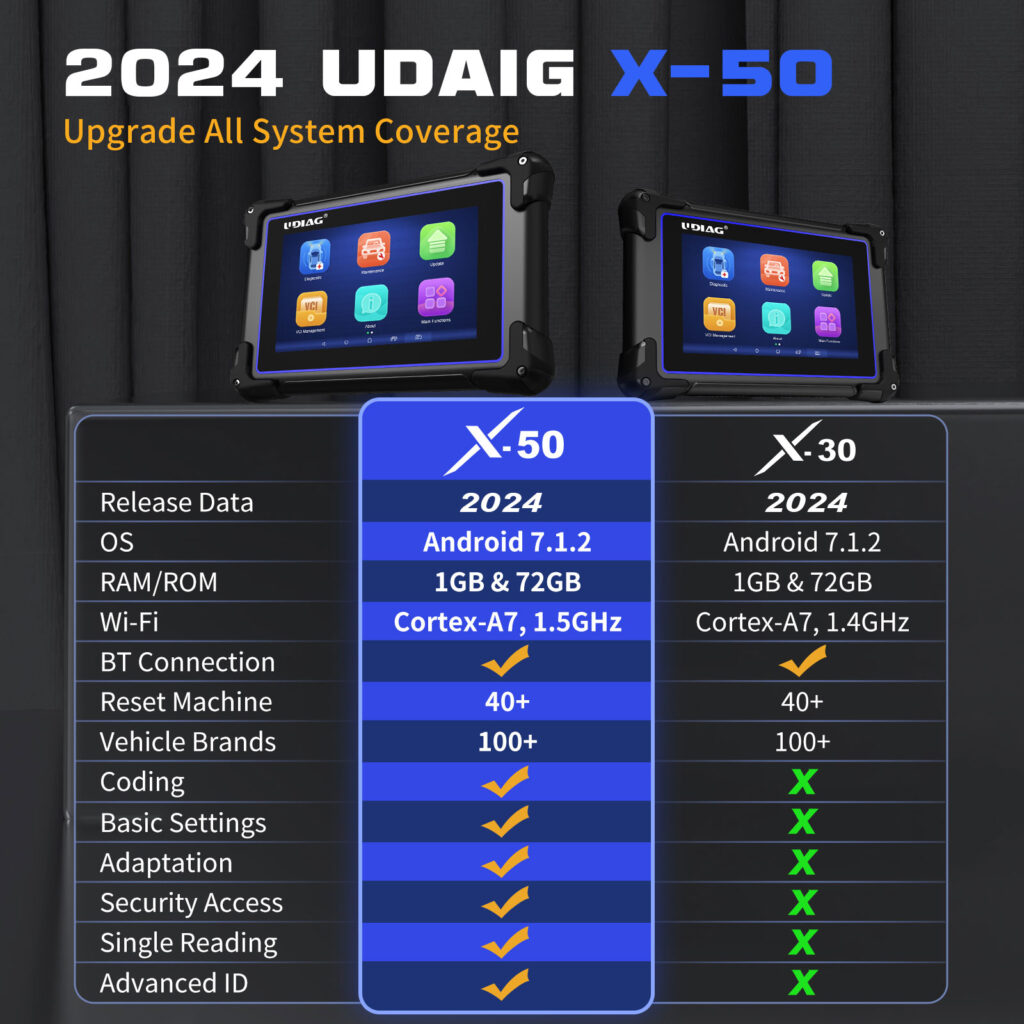How do I update the software on my diagnostic tablet?
2024-05-07 by UDIAG
In the realm of modern automotive diagnostics, the tools we employ are only as effective as the software they run on. Whether you’re a seasoned mechanic or an enthusiast tinkering with your own vehicle, ensuring your diagnostic tablet’s software is up-to-date is paramount. This essay serves as a comprehensive guide to navigating the process of updating the software on your diagnostic tablet, outlining the steps involved and emphasizing the importance of staying current.

I. Preparing for the Update
Before diving into the updating process, it’s crucial to make some preparations. Begin by checking the current version of the software installed on your diagnostic tablet. This step ensures that you’re aware of any existing updates and helps track your progress. Additionally, take the time to back up any important data stored on the tablet. While rare, the update process can sometimes lead to data loss, so it’s better to err on the side of caution. Finally, ensure that your tablet is connected to a stable internet connection, as a reliable connection is essential for downloading and installing updates seamlessly.
II. Updating Process
The updating process typically falls into two categories: automatic and manual updates. Automatic updates offer convenience by periodically checking for and installing updates in the background. If your diagnostic tablet supports automatic updates, take the time to set up this feature, ensuring that your device stays current without requiring manual intervention. Understanding how automatic updates work can help demystify the process and alleviate concerns about relinquishing control over the update process.
In the absence of automatic updates, manual updates become necessary. Begin by manually checking for updates through the settings or dedicated software interface on your diagnostic tablet. Once an update is available, download and install it following the on-screen prompts. During this process, it’s essential to remain patient and avoid interrupting the update, as doing so can lead to software corruption or other issues.
III. Post-Update Checks
After completing the update process, it’s essential to verify the successful installation of the update. Take the time to test the functionality of diagnostic tools and software to ensure that everything is operating as intended. If any issues arise during or after the update, address them promptly to prevent further complications. Common issues may include connectivity issues, insufficient storage space, or concerns regarding battery life. Troubleshooting these issues promptly can help maintain the optimal performance of your diagnostic tablet.
IV. Best Practices for Software Maintenance
In addition to updating your diagnostic tablet’s software, adopting best practices for software maintenance can help prolong its lifespan and ensure optimal performance. Regularly checking for updates, keeping the tablet charged during updates, staying informed about new features and improvements, and seeking professional assistance when needed are all essential aspects of software maintenance.
Conclusion
In conclusion, keeping your diagnostic tablet’s software up-to-date is essential for maintaining its effectiveness and reliability. By following the steps outlined in this guide and adopting best practices for software maintenance, you can ensure that your diagnostic tablet remains a valuable tool in your automotive endeavors. Remember, staying proactive in maintaining software health is key to unlocking the full potential of your diagnostic tablet and staying ahead in the ever-evolving world of automotive diagnostics.
Get Access Now: https://www.udiagtech.com
FAQs
1. Why is it important to update the software on my diagnostic tablet?
Regular software updates often include bug fixes, performance improvements, and new features that enhance the functionality and reliability of diagnostic tools. Keeping your software up-to-date ensures that you have access to the latest advancements in automotive diagnostics, improving accuracy and efficiency.
2. How do I know if there’s an update available for my diagnostic tablet?
Most diagnostic tablets have a built-in feature to check for updates automatically. You can typically find this option in the settings or software interface of your device. Alternatively, you can manually check for updates by visiting the manufacturer’s website or contacting customer support.
3. Can I update the software on my diagnostic tablet manually?
Yes, if your diagnostic tablet doesn’t support automatic updates or if you prefer to control the update process manually, you can typically download and install updates from the manufacturer’s website or through a dedicated software application provided by the manufacturer.
4. What should I do before updating the software on my diagnostic tablet?
Before updating the software, it’s essential to back up any important data stored on your diagnostic tablet. This helps prevent data loss in case of any unexpected issues during the update process. Additionally, ensure that your tablet is connected to a stable internet connection to facilitate the downloading and installation of updates.
5. What should I do if the update process fails or encounters errors?
If the update process fails or encounters errors, try troubleshooting common issues such as connectivity problems, insufficient storage space, or low battery levels. Restarting the tablet and retrying the update process may also resolve certain issues. If you’re unable to resolve the issue on your own, contact the manufacturer’s customer support for assistance.
6. How often should I update the software on my diagnostic tablet?
It’s recommended to check for updates regularly and install them as soon as they become available. Manufacturers often release updates periodically to address issues and introduce new features, so staying up-to-date ensures that you’re always using the most reliable and efficient version of the software.


